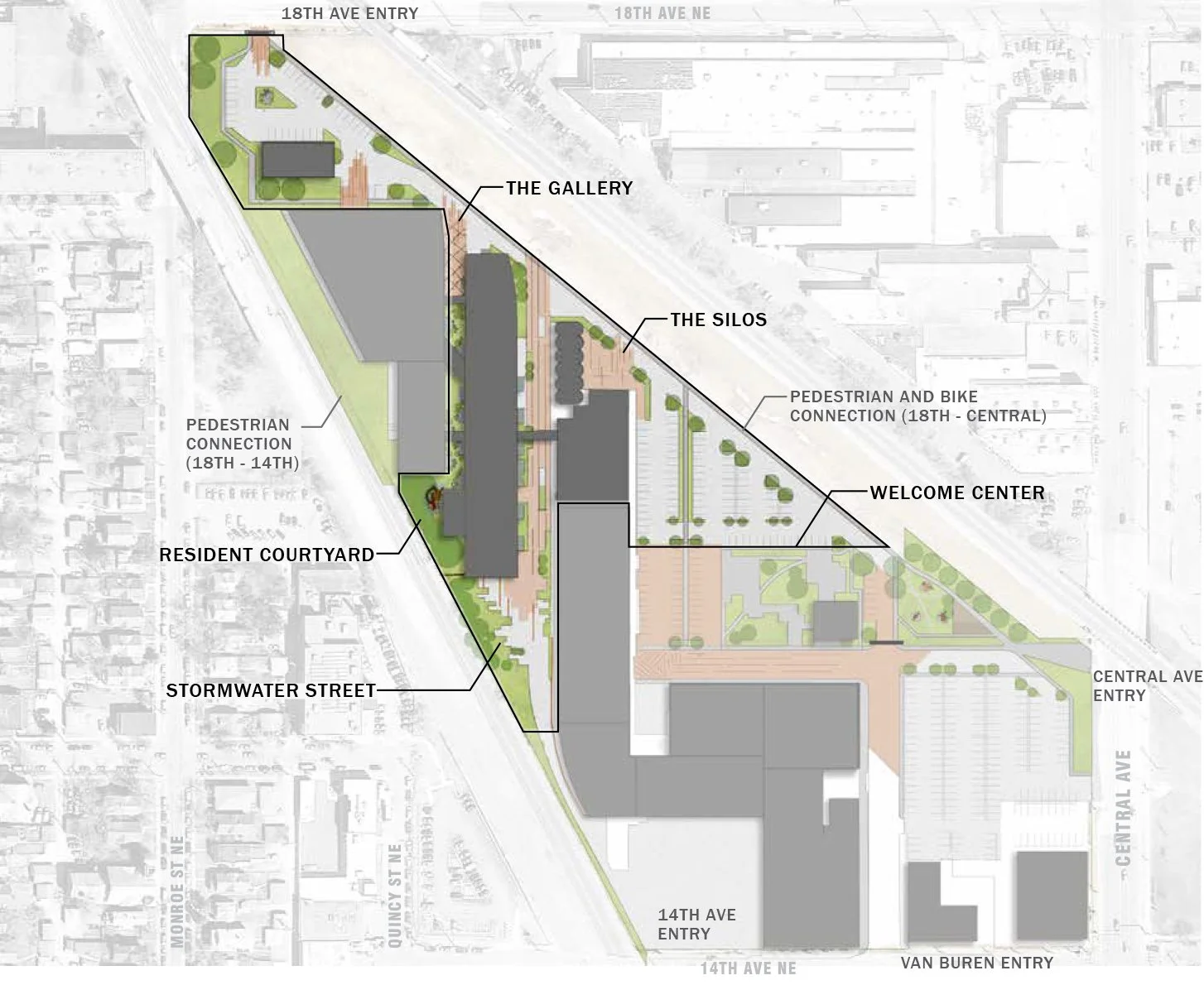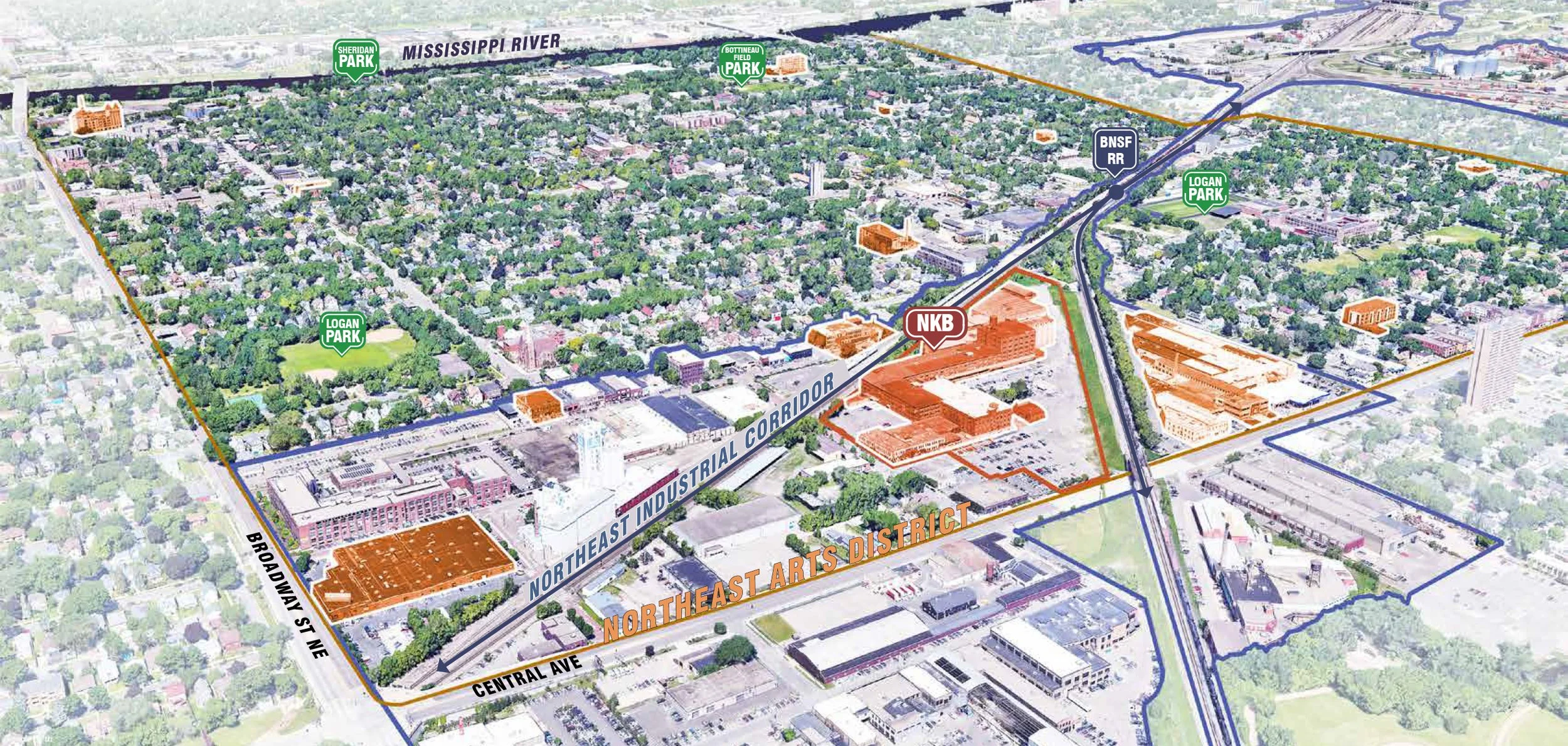
Artspace NKB Campus
Minneapolis, Minnesota
Client: Artspace
Ana Nelson was the Lead Landscape Architect on the Project prior to TLALLI Collaborative.
The Northrup King Building (NKB) Campus is the largest artist studio complex in Minnesota. It is also the anchor venue during Art-a-Whirl, the largest studio art crawl event in the country. Located in the heart of the Northeast Minneapolis Arts District, the NKB Residential Project will be part of the already established campus comprised of 13 buildings spanning over 13 acres, 3.5 city blocks, and 738,000 square feet in gross building area.
The NKB campus was acquired by Artspace in 2019 as a mission-critical endeavor to preserve space for an existing arts community of over 350 artists and arts-related businesses while expanding access.
The NKB Residential Project focuses on the adaptive reuse of three historic, industrial buildings within the campus creating 84 live/work units of affordable housing for artists and their families at 30 to 80% of Area Median Income and available to income-qualifying artists from all cultural backgrounds. The redevelopment also includes over 8K square feet of commercial space for creatives.
The project will sustain the established reputation and character of NKB while attracting new visitors to the campus with public features such as enhanced bike connectivity and amenities, enhanced public spaces including a shared-use street/public promenade with gathering and performance opportunities, and enhanced dark-sky friendly street lighting.
Redevelopment plans also include improved stormwater strategies and best management practices, funded by the Mississippi Watershed Management Organization (MWMO), reducing 80% of the annual total phosphorus and 92% of the annual sediment from runoff from the site that flows to the Mississippi River. Strategies include filtration trenches, bioswales, historic grain bin cisterns, runnels, and drought-tolerant native plantings.
The project proposes a 250% increase of tree canopy, 20% conversion of parking into rainwater gardens and tree trenches, and an increased ecological habitat as part of the Mississippi Flyway Corridor.




